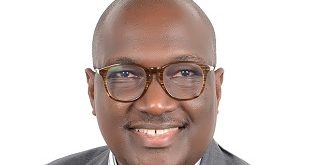
By Agather Atuhaire and Ian Katusiime
Analysts say Cabinet line up intended to reward loyalty, as well as winning 2016 votes
On March 1, President Yoweri Museveni finally announced the long-awaited Cabinet reshuffle that had caused anxiety among politicians.
All along, suspicion has been rife that the people who have been working tooth and nail to please Museveni, in his fight against his former ally, former Prime Minister Amama Mbabazi, had their eyes on the Cabinet list while those already in were worried about their positions.
The reshuffle had been imminent because of the vacant positions that arose from the resignation of Betty Bigombe, the sacking of Mbabazi, who was replaced by former health minister Ruhakana Rugunda, and the transfer of Justine Kasule Lumumba, Richard Todwong and Rose Namayanja to the National Resistance Movement (NRM) party secretariat.
When it finally happened, the reshuffle was looked at by some analysts as a continuation of the fight against Mbabazi and as a 2016 election strategy.
The new cabinet is about three things,” says Makerere political science don Sabiti Makara; “loyalty, targeting 2016 votes and catching the youth.”
Lwemiyaga County MP Theodore Ssekikubo also said the reshuffle “is about the fortunes of 2016.”
Among the new appointments was Northern Region youth MP Evelyn Anite, who down on her knees moved a motion for Museveni to be the sole NRM presidential candidate in the 2016 elections.
It was the controversial ‘sole candidature’ motion that marked the start of Mbabazi’s troubles in the party where he had hitherto been the de facto number two. For her efforts, Anite was rewarded with the portfolio of minister of state for youth and children affairs.
Makara says Anite’s is a reward for her role in ousting Mbabazi but also to get the votes of the youth in the forthcoming elections.
It’s also not surprising that the biggest percentage of new appointments came from Kigezi region, where Mbabazi hails from. They include; Rujumbura MP Jim Muhwezi, Ndorwa West MP David Bahati and Kinkizi East MP Chris Baryomunsi, all sworn enemies of Mbabazi.
Muhwezi was appointed minister of information and national guidance, a position previously occupied by Rose Namayanja. Muhwezi, a bush war veteran, was last in Cabinet in 2006 as minister of health and was dropped from Cabinet over corruption allegations involving Global Alliance for Vaccines and Immunisation (GAVI) money.
Dr. Baryomunsi, who hails from the same district as Mbabazi – Kanungu – is the new state minister for general duties in the ministry of health replacing Elioda Tumwesigye who was elevated to health minister.
Muhwezi and Baryomunsi were at the forefront of calling for Mbabazi’s sacking in 2008 when he was accused of influence peddling in the purchase of land in Temangalo by the National Social Security Fund, and in 2011 when he was accused of taking bribes from oil companies.
The duo was in March this year named on a committee to review the experiences of the past party elections, which were marred by chaos and vote rigging, later to be blamed on Mbabazi.
They were also named on the NRM delegates’ conference organising committee of December 15 which was looked at as Mbabazi’s last stroke. Bahati, the new state minister for planning has been a Museveni loyalist and has also been influential in the fight against Mbabazi. In a rather shocking move, Museveni dropped Finance minister Maria Kiwanuka and replaced her with her with Matia Kasaija.
“Kiwanuka is a good performer but not a vote hunter,” said Makara.
She was appointed senior presidential advisor of financial matters (Bretton Woods institutions).
Former Attorney General Peter Nyombi was also dropped and replaced by his former deputy Frederick Ruhindi. This, observers say, was due to his closeness with Mbabazi.
But some observers say this decision could be a double-edged sword for Museveni. They say the Buganda region will feel left out, which could cost NRM votes.
But Makara says Museveni has ways of endearing himself to Buganda like returning their properties, so he is not worried about the impact the reshuffle could have on the Buganda votes.
Mary Karooro Okurut, an avowed Museveni loyalist, was moved to the security ministry switching places with Muruli Mukasa, who goes to the ministry of gender, labour and social affairs.
Some eyebrows were raised over this appointment as Karooro has no security background whatsoever. Others however say Museveni has always run these ministries so it doesn’t matter who is in what ministry. Former Forum for Democratic Change (FDC) President Kizza Besigye knows why Museveni appointed Karooro, whom he described as “a total novice.” He says the President wants to open up security institutions for further clean-up of the influences of Mbabazi and Sejusa. He adds that Museveni’s informal agents will be doing the necessary work under his direct supervision. Kiboga woman MP Ruth Nankabirwa is the new Chief Whip replacing new NRM secretary general Justine Kasule Lumbumba.
In other changes, Abraham Byandala was moved from the helm of the powerful works and transport ministry to be minister without portfolio. He was also replaced by his former deputy John Byabagambi. Mwesigwa Rukutana was moved from Labour where he was the minister of state, to be the deputy attorney general. Ronald Kibuule, formerly state minister for youth and children affairs, is now state minister for water. Asuman Kiyingi moved to works as state minister, while Philemon Mateke, a former LC V Chairman of Kisoro District, replaces Kiyingi as state minister for regional affairs.
Kalungu East MP Vincent Sempija became the new state minister for agriculture. The docket of 2nd Deputy Prime Minister and East African Community affairs minister, formerly held by the late Eriya Kategaya remains vacant.
 The Independent Uganda: You get the Truth we Pay the Price
The Independent Uganda: You get the Truth we Pay the Price



